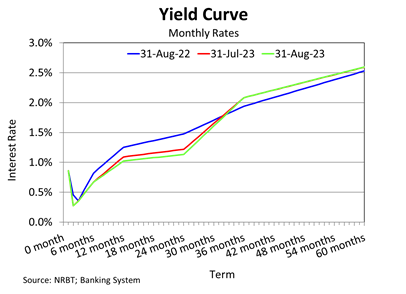Domestic food prices helped maintain the high headline inflation rate
- Details
- Category: Economic Releases
- Created: 08 May 2017
| Inflation November 2016 | ||||
| Nov 16 | Oct 16 | Sep 16 |
Aug 16 |
|
| Headline * | 6.8 | 6.1 | 7.0 | 5.1 |
| Domestic ^ | 3.4 | 2.9 | 4.3 | 2.1 |
| Imported ^ | 3.4 | 3.2 | 2.8 | 3.1 |
| * Year-ended growth | ||||
| ^ Percentage point contribution to year-ended growth | ||||
The annual headline inflation rate for November was somewhat similar to the National Reserve Bank of Tonga’s (NRBT) expected headline inflation of 6.6%. In the year ended November 2016, the annual headline inflation rose by 6.8% compared to a 1.9% deflation of the same month last year. Both domestic and imported inflation contributed equal percentage points to the annual headline inflation rate.
Additionally, domestic inflation rose over the year by 8.1% higher than the 5.8% increase in imported prices. The prices of kava-Tonga and imported meat remained the largest contributors to the annual increase in inflation rate. The prices of local fruit and vegetables also increased over the year by 4.4% due mainly to the seasonality in local produce.
As mentioned above, imported inflation rose by 5.8% annually and 0.2% over the month. The prices of alcohol, diesel, and petrol drove the inflation over the month. In year ended terms, the highest contributor to the rise of imported prices was the price of meat, fish and poultry category with 1.9 percentage points. This was followed by changes in the prices of other imported food (mostly sugar and flour) and tobacco, each contributing 0.5 percentage points to the annual inflation rate.
The rises in prices of these imported items continued to reflect the effects of the amended excise taxes and import duties effective in July 2016. Over the year, prices of tobacco increased the most by 16.6%, followed by a 12.9% increase in the price of meat, fish and poultry. The prices of other food components such as cereals and cereal products increased by 7.9% whilst the prices for sugar and flour rose by 27% and 3% respectively. Fuel prices increased by 3.8% in the year ended November 2016 also reflected in the 2% increase of both diesel and petrol prices.
Over the year to November 2016, domestic inflation increased by 8.1% although it fell by 0.1% over the month. The local components of the CPI basket remained constant over the month except for the food category. Seasonality in local fruits and vegetables pushed its prices higher but was offset by the fall in prices of meats, fish and poultry, and dairy farm products.
In year ended terms, the continued short supply of kava-Tonga has resulted in a significant rise in its price by 174%, contributing 1.1 percentage point to the annual headline inflation. Additionally, the prices of leisure, recreational & craft supplies increased over the year by 206.6%. This was due mainly to a hike in the prices of stamp for air mail to Australia from $0.90 cents to $5.00 in January 2016. Moreover, prices of cereal and cereal products increased over the year by 18% with 0.6 percentage point contribution to the headline inflation. This category includes all baked products made of flour, reflecting the inflationary pressure that imported food prices has on the local food prices. Almost all ingredients used for baking of bread and different variety of pastries are imported and its respective prices have been increasing.
On the outlook, kava prices are likely to be on the rise for some time due to the continued shortage of supply and will contribute to drive domestic inflation higher. With world oil and food prices slowly on the rise, in conjunction with the added new customs duty since July 2016, imported inflation is expected to continue to rise. Additionally, domestic consumption and import spending is expected to rise during Christmas thus driving the headline inflation higher. The NRBT expects the annual headline inflation rate to be well below the NRBT’s inflation reference rate of 5% per annum in 2017/18. However, movements in commodity, fuel prices and other temporary factors may pose a risk to this forecast.
Download the full report: Inflation Rate - November 2016

